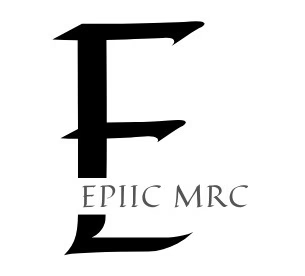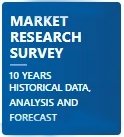Market Outlook
The biotherapeutics market, valued at $334.8 million in 2024, is projected to reach $686.7 million by 2032, growing at a CAGR of 6.8%. Key trends include pricing pressures, rising healthcare costs, AI-driven innovations, and the success of GLP-1 products. AI and machine learning are enhancing drug discovery, patient targeting, and operational efficiency.
Investment in novel therapies such as gene and cell therapies is increasing, with FDA fast-tracking approvals. Digital health solutions, including wearable devices and telemedicine, are gaining traction. Advances in mRNA technology, gene therapies for CNS diseases, and radiopharmaceuticals are shaping the industry. Companies like Firefly Bio are innovating in Antibody-Drug Conjugates (ADCs), while GC Therapeutics focuses on off-the-shelf cell therapies.
Landmark approvals in 2024 include CASGEVY, a cell-based gene therapy for beta-thalassemia, and progress in bispecific antibodies. North America dominates the market due to its strong biopharma presence, while Asia Pacific is witnessing rapid growth at an 11% CAGR.
Segment-wise, monoclonal antibodies are forecasted to reach $200 billion by 2029, insulin remains stable at $40 billion, and vaccines are expected to surpass $95 billion. Next-generation biotherapeutics like CAR T-cell therapies and RNA-based treatments continue to address unmet medical needs.
Drivers of Market Growth in Biotherapeutics
Rapid Growth of Monoclonal Antibodies (mAbs): The monoclonal antibodies (mAbs) segment has seen significant growth, making them a pillar of modern biotherapeutics. Their spread stems mainly from their versatility against many illnesses, especially those that have traditionally been difficult treat-such as certain cancers and autoimmunity. Increasing approval of mAbs for new indications attracts even more heft investments. As newer treatment options take center stage, and by virtue of the high precision that mAbs offer in targeting very specific disease mechanisms, the role of mAbs continues to grow in both clinical practice and research. Complementing their advantages in providing better therapeutic outcomes is the continuous advancement in production techniques that can make them more widely available.
Advancements in Biotechnology: The advances presently occurring in biotechnology are reshaping the landscape of biotherapeutics development. Gene editing technologies such as CRISPR, together with recombinant DNA technology, are greatly improving our ability to develop treatments that are more precise and personalized. These advances allow for therapies that address the root causes of diseases at the molecular level, thus creating more targeted approaches never before possible. These new technologies led to the development of therapies for conditions previously considered untreatable, thereby improving health outcomes for patients while also expanding the market for novel therapeutics. Personalized medicine-namely, when therapies are customized to the genetic makeup of individual patients-has created that much further impetus for the advanced technological development now underway and, in turn, generated an ever-growing demand for new and innovative biotherapeutics.
Increased Investment and Mergers & Acquisitions: The market for biotherapeutics has grown massively with investments into this area. Big and small companies in the sector are positioning themselves to take advantage of the demand for biologics, whereas the ability of biologics to provide higher chances of clinical success and fill market needs has led to greater merger and acquisition activity in the industry. Companies are particularly interested in biologic licensing from smaller biotech-like companies that have promising offsets in their pipelines. This not only strengthens their own research and development activities but also enables the fast-tracking of potential new treatment agents into a market. This premium investors are paying for biologic companies shows just how much investors value biotherapeutics and, importantly, indicate that financial resources will flow in a way that sustains innovations in this fast-paced environment.
Restraints in the Biotherapeutics Market
Intellectual Property Issues
Added to this, another challenge in the biotherapeutics industry pertains to the evidentiary display due to intellectual property (GG). As soon as biotherapeutic products approachpatent expiration, the biosimilars entered in the market, thereby more competition for these products and hence affecting the profits of original innovators due to lower pricing for biosimilars. Companies generally take considerable efforts in protecting proprietary formulations and manufacturing practices, yet the challenge is further aggravated by the fact that after patent expiry, these formulations/performance characteristics may not be patentable anymore, causing IP conflicts which may involve years of legal wrangling. Predictably, the large-molecule nature of biologics makes patenting and protecting IP most complex. Gene therapy is another innovation that brings additional complications to IP, usually requiring many patents for a single therapy, which may become conflicting and necessitate multiple licensing agreements. These complications in the IP landscape may reduce investments, delay market access, and ultimately kill long-term profitability of biotherapeutics navigating through this maze.
Opportunities
Growth of Biosimilars
Biosimilars are emerging as a powerful force within the biotherapeutics market, driven by the expiration of patents for original biologic drugs. As these patents expire, biosimilars offer a cost-effective alternative to traditional biologics, providing patients with greater access to life-saving treatments. This growth opportunity lies in the potential to address the ever-increasing global demand for affordable medications, particularly in oncology, autoimmune diseases, and chronic conditions. The rise of biosimilars also paves the way for increased competition within the market, which can drive down costs and improve affordability for healthcare systems. For patients, this competition translates into more treatment options, and for healthcare providers, biosimilars may present a more sustainable way to manage budgets while still delivering high-quality care. The regulatory and clinical experience gained from the success of biosimilars can also foster the development of next-generation treatments, further enhancing their role in patient care.
Personalized Medicine Trends
The healthcare industry is shifting toward personalized medicine, replacing traditional one-size-fits-all treatments with targeted therapies tailored to individual genetic profiles. This transformation is driven by advancements in genomics, molecular diagnostics, and biotechnology, creating new opportunities for drug developers to enhance patient outcomes. As a key market trend, personalized medicine is expanding the market size for precision-based therapies while improving efficacy and reducing adverse reactions. The increasing adoption of these treatments is boosting market share for pharmaceutical companies and biotech startups, attracting significant investments and fostering innovation.
Industry insights indicate that as technology evolves, personalized medicine will become more accessible and cost-effective, driving market growth and influencing future forecasts. This trend aligns with the healthcare sector’s focus on sustainability and efficiency, positioning personalized medicine as a dominant force in biotherapeutics. Continued research and development will further expand market opportunities, shaping the future of drug development and patient care.

The biotherapeutics market is segmented into key categories, with monoclonal antibodies holding a dominant share due to their widespread use in immunotherapy. Insulin remains a crucial segment, driven by the increasing prevalence of diabetes. Vaccines are experiencing significant growth, fueled by advancements in technology and global health initiatives. Additionally, emerging therapies such as gene and cell therapies are gaining momentum with rising investments and new product developments. These segments collectively drive the expansion of the biotherapeutics market, reflecting a strong focus on innovation and disease management. While these estimates provide insights into market trends, precise data would require detailed market research reports.
Competitive Landscape
Replimune
TianTi Biotherapeutics
BioMarin Pharmaceutical
A2 Biotherapeutics
Annexon Biosciences
Bristol Myers Squibb
Kite Pharma
Iovance Biotherapeutics
Fate Therapeutics
BioNTech
Calidi Biotherapeutics
Poseida Therapeutics
Atara Biotherapeutics
Adcentrx Therapeutics
Virtuoso Therapeutics
Recent Developments
- GEMMA Biotherapeutics, a Philadelphia-based therapeutics firm, has raised $34 million in seed funding. The funding will be used to expand the company’s operational expansion and gene therapy programs. The funding was led by Double Point Ventures, Bioluminescence Ventures, and Earlybird Venture Capital, with participation from Savanne Life Sciences. The firm’s patient-centered approach aims to deliver life-saving gene therapies to the neediest.
- Iovance Biotherapeutics has granted inducement stock options to 38 new non-executive employees under its Amended and Restated 2021 Inducement Plan. The options, with an exercise price of $7.22, will vest over a three-year period, with one-third vesting on the employee’s first anniversary and the remaining shares in eight quarterly instalments.
- Atara Biotherapeutics, a leader in T-cell immunotherapy, reported Q3 2024 financial results, including the first patient enrolled in the Phase 1 NHL trial of ATA3219. The company is on track for the Tab-cel biologics license application (BLA) with a PDUFA target action date of January 15, 2025. The company has the potential to receive an additional $60 million milestone payment from Pierre Fabre. Atara is progressing toward an IND submission in Q4 2025.
- Vittoria Biotherapeutics has started its Phase 1 clinical trial of VIPER-101, a gene-edited autologous dual-population CAR-T therapy for T cell lymphoma patients. The trial uses Vittoria’s proprietary Senza5 platform, which integrates CD5 gene-editing technology with a 5-day manufacturing process. The trial aims to improve the efficacy and safety of conventional autologous cell therapies, providing hope to patients whose cancers have not responded to traditional treatments.
- NImmune Biopharma is partnering with BioTherapeutics to develop immunoregulatory precision medicines. The collaboration will use BioTherapeutics’ computational and preclinical services, proprietary animal models, and regulatory infrastructure. The goal is to create safer, more effective immunoregulatory therapeutics for inflammatory and autoimmune diseases, leveraging the regulatory infrastructure and preclinical resources.
- EpimAb Biotherapeutics and Vignette Bio have signed a license agreement to develop EpimAb’s BCMA-targeting T-cell engager EMB-06. The agreement grants Vignette exclusive rights to develop and commercialize EMB-06 outside Greater China, while EpimAb retains the rights in Greater China.
Market Segmentation
Segmentation by Type
Immunomodulators
Enzymes
Vaccines
Hormones
Gene Therapies
Cell Therapies
Others (Antibacterials, Antivirals, Antifungals, etc.)
Segmentation by Application
Oncology
Immunology
Cardiology
Neurology
Respiratory
Endocrinology
Infectious diseases
Others (Dermatology, Ophthalmology, etc.)
Segmentation by Distribution Channel
Hospital Pharmacies
Retail Pharmacies
Online Pharmacies
FAQ
What is the projected growth of the biotherapeutics market?
The market is expected to grow from $334.8 million in 2024 to $686.7 million by 2032 at a CAGR of 6.8%.
What are the key trends shaping the biotherapeutics market?
Major trends include AI-driven innovations, pricing pressures, rising healthcare costs, and the growing success of GLP-1 products.
Which biotherapeutic segment holds the largest market share?
Monoclonal antibodies (mAbs) dominate the market, projected to reach $200 billion by 2029.
What role does AI play in biotherapeutics?
AI and machine learning enhance drug discovery, patient targeting, and operational efficiency, driving innovation.
Which regions are leading in biotherapeutics market growth?
North America leads due to its strong biopharma presence, while Asia Pacific is growing rapidly at an 11% CAGR.
What are the major drivers of biotherapeutics market growth?
Growth is fueled by advancements in biotechnology, increased investment, and rising demand for personalized medicine.
What are the biggest challenges in the biotherapeutics market?
Intellectual property issues, pricing pressures, and competition from biosimilars pose significant challenges.
How are biosimilars impacting the biotherapeutics market?
Biosimilars are driving cost reductions, improving patient access to biologics, and increasing market competition.
What role does personalized medicine play in biotherapeutics?
Personalized medicine tailors treatments to genetic profiles, improving efficacy and reducing side effects, fueling market growth.
Which emerging therapies are shaping the future of biotherapeutics?
Gene and cell therapies, CAR T-cell treatments, RNA-based drugs, and radiopharmaceuticals are key emerging trends.

